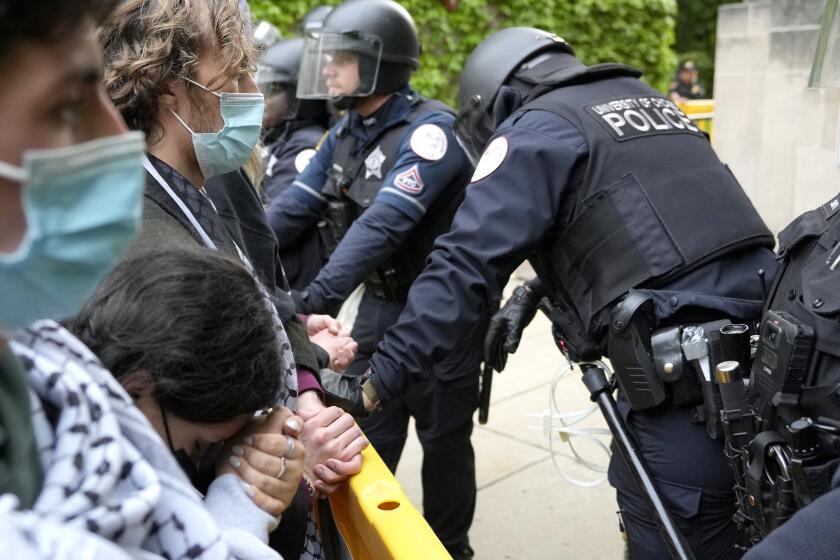Lead Level Unsafe in 400 L.A. School Water Fountains
An unsafe level of lead was found in water from more than 400 refrigerated drinking fountains in the Los Angeles Unified School District, a district study showed Monday.
Those fountains were among 900 throughout the district that were shut off last year after a warning about lead fountain parts was issued to all schools by the state Department of Education.
The district’s staff recommended that the lead-contaminated drinking fountains remain closed and be replaced with new fountains without lead parts, district officials said.
The report was presented Monday to the school board, which is expected to vote in two weeks on the staff’s recommendation.
High levels of lead in the bloodstream have been linked to learning disabilities in children and progressive kidney disease in adults.
No Cause for Alarm
A Los Angeles County health official who reviewed the district’s findings said there was no cause for alarm in the findings, because drinking fountains are not among the principal sources of lead poisoning.
“There is no worry specifically because of the fountains,” said Dr. Paul Papanek, an epidemiologist for the Los Angeles County Department of Health Services. He recommended a blood test to check the lead level only if, in addition to drinking from a lead-lined fountain, a child has a family member who works in a lead-producing industry or if he or she is exposed to flaking house paint that contains lead.
Nearly 50% of the 900 refrigerated fountains tested were found to have exceeded the recommended lead level of 20 parts per billion, the study said.
Replacing the contaminated fountains will cost an estimated $300,000. David Koch, district business services administrator, said that federal funds may be available to cover some or all of the costs and that the district may explore recovering some of the expense from drinking fountain manufacturers.
Linked Mostly to Faucets
The district study found that lead contamination was found primarily in refrigerated fountains and was linked to the spigot or faucet, the tank or an inner coil, said Susie Wong, the district’s chief safety officer. In a few cases, the problem was associated with pipes that contained some lead. The report ruled out water suppliers, such as municipal water systems, as the source of the elevated lead levels, she said.
Wong said the district will soon begin testing non-refrigerated drinking fountains, which are found in most schools in the district, as well as water from faucets used in food preparation. The study found “some problem” with high lead levels in the water from non-cooled fountains, but officials are not sure what the cause could be.
According to Papanek, the average child would consume less than 10 micrograms of lead a day through lead-based drinking fountains, while normal exposure to lead in dirt or paint could result in a child ingesting 100 to 200 micrograms a day.
If a child was the first in line in the morning to take a drink of water from a lead-contaminated fountain, Papanek said, the most lead that child could ingest from the drink would be 30 micrograms. “That is not going to make any kid lead-poisoned,” he said. “But if the child already has a borderline lead problem, this may put him at risk.”
More to Read
Start your day right
Sign up for Essential California for news, features and recommendations from the L.A. Times and beyond in your inbox six days a week.
You may occasionally receive promotional content from the Los Angeles Times.







